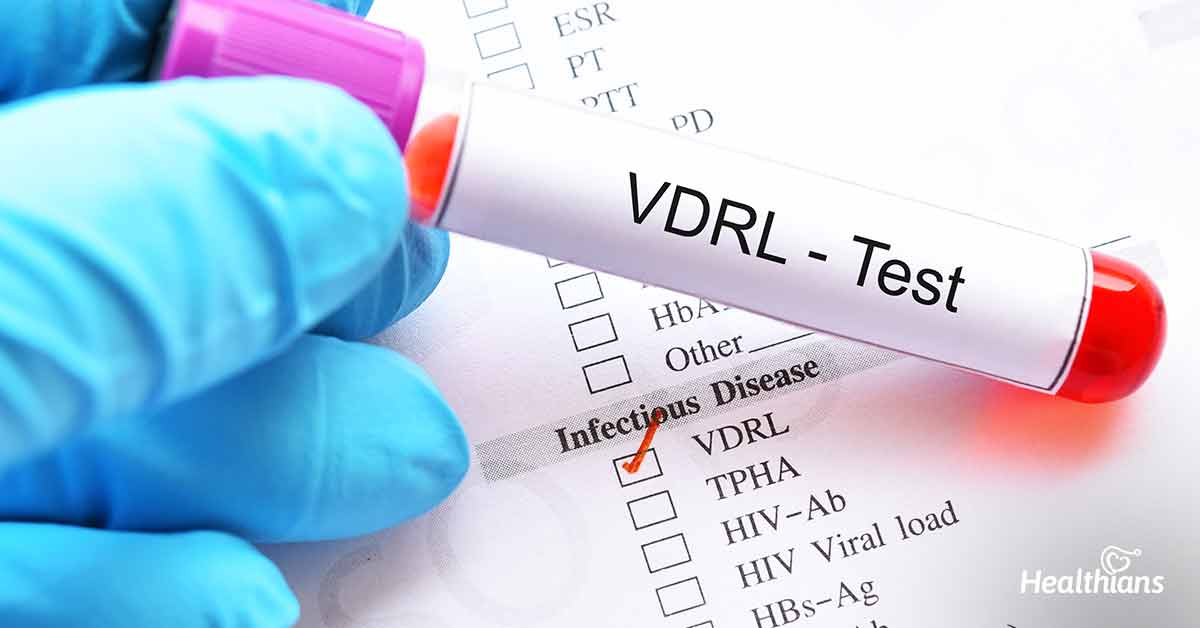Contributed by Healthians Team
What is the VDRL test?
The venereal disease research laboratory (VDRL) test is intended to evaluate whether you have syphilis which is a sexually transmitted infection (STI). Syphilis is caused by the bacterium Treponema pallidum. This bacterium infects by penetrating into the lining of your mouth or genital area. The VDRL test doesn’t search for the bacterium that causes syphilis. This test looks for the antibodies produced by your body in response to the antigens produced by the cells damaged by the bacteria.
Antibodies are a category of protein produced by your immune system to fight off invaders such as bacteria or toxins. Examining these antibodies can let your doctor know if you are suffering from syphilis. You don’t need to have the symptoms of syphilis for this test to be accurate. This is so because it searches for the antibodies produced as a result of a syphilis infection but the VDRL examination can be used irrespective of your symptoms.
Who should get the test?
Your doctor will prescribe a VDRL test if there’s a chance of your suffering from syphilis. Early symptoms that may prompt your doctor to recommend this test include a small and painless sore with swelling in lymph nodes near it. A skin rash that doesn’t itch is another sign of it. In other cases, your doctor may screen you for syphilis even if you don’t show any signs.
For example, your doctor will screen you for syphilis as a routine part of your care when you are pregnant. This is a standard procedure that is followed and it doesn’t mean that your doctor thinks you have syphilis. Your doctor might also examine you for syphilis if you are being treated for another STI such as gonorrhea or you are infected with HIV or if you have engaged in high-risk sexual activity.
Why is the test needed?
Your doctor might recommend a screen for syphilis to check how well the treatment is working. It helps your doctor to look for a certain disease or condition before any symptoms appear. This aids in finding the infection for treatment to avoid long-term problems.
What does the test result mean?
If your test results are negative, then you don’t have syphilis. If it is positive for syphilis antibodies, then you probably have syphilis. In this case, your doctor will suggest a specific test to confirm the results. A treponemal test is often used to confirm the positive test. Treponemal tests check whether your immune system has produced specific antibodies in direct response to syphilis causing Treponema pallidum. The VDRL test isn’t always accurate as you might have false-negative results if you’ve had syphilis for less than three months because your body could take this long to make antibodies. The test is also unreliable in late-stage syphilis. On the other hand, ailments such as HIV, Lyme disease, malaria, pneumonia, systemic lupus erythematosus, IV drug use, tuberculosis can cause false-positive results.
In certain cases, your body might not produce antibodies even when you have been infected with syphilis. This means your VDRL test will be inaccurate. The antibodies produced as a result of syphilis infection can stay in your body even after treatment. You might always show positive results in this test.
How is the test done?
All you need to do for the VDRL test is allow a healthcare professional to draw your blood. Blood is generally drawn from a vein in your hand. This blood sample is then sent to a laboratory. Then it is tested for the antibodies produced as a result of syphilis.




